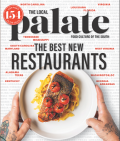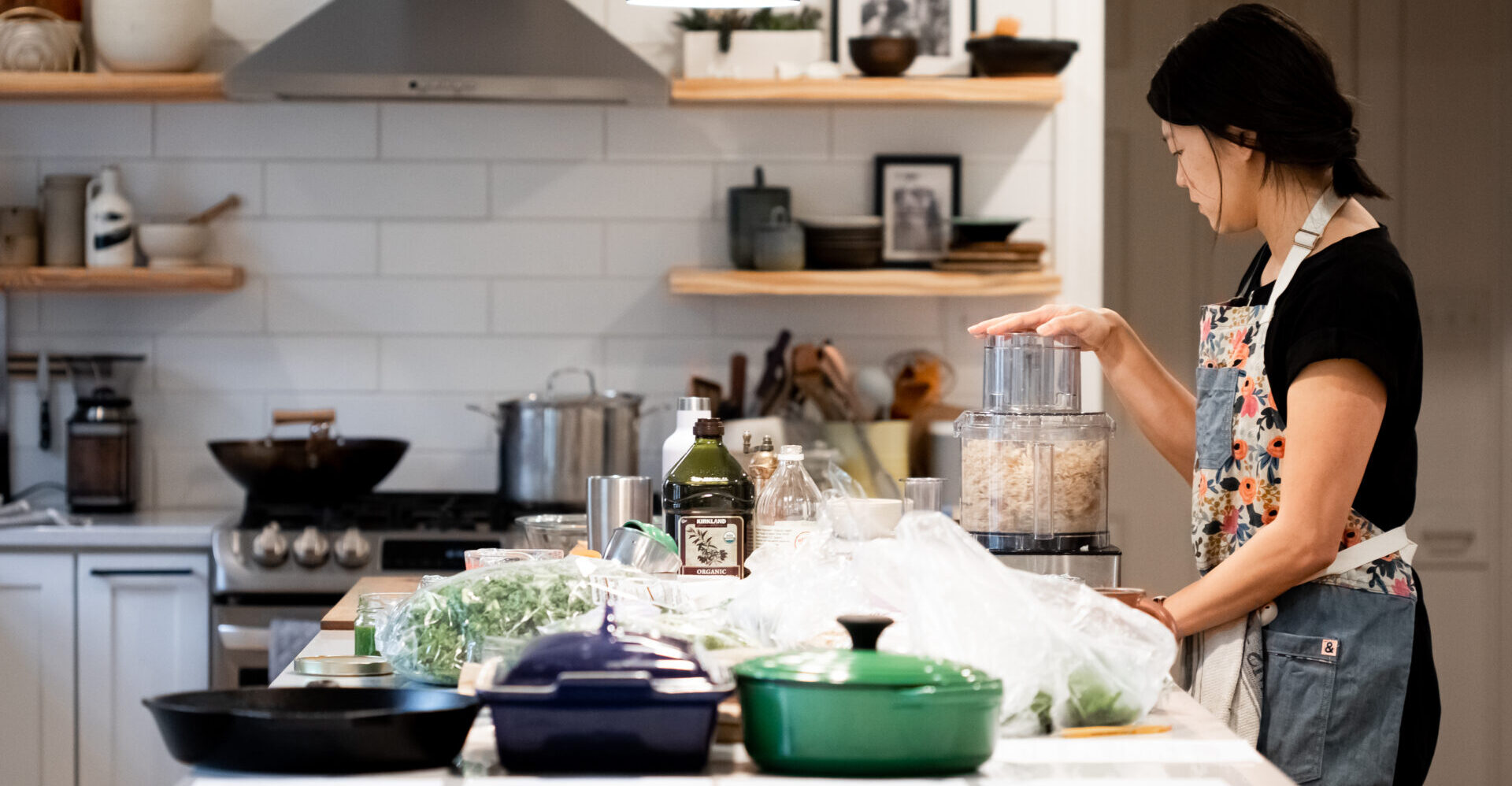Save the planet and your wallet with tips and recipes from North Carolina chef-author Mei Li
With food access issues exacerbated by the pandemic, supply chain interruptions, and price increases from inflation over the last two-plus years, Americans have changed the way they think about food.
Global data aggregator GWI found that healthy eating habits, engagement with cooking inspiration sources like cookbooks, websites, and videos, and preferences toward going meatless and seeking out higher quality produce are all on the rise in America.
Still, the USDA estimates that from production to retailers to consumers, between 30 and 40 percent of the food supply in the country goes to waste, or around 133 billion pounds of food each year. That’s hundreds of pounds of food per person headed into landfills annually—not to mention parts like plastic packaging that take centuries to break down. While produce and other spoiled food items decompose much quicker, they release methane in the process, contributing to greenhouse gas emissions.
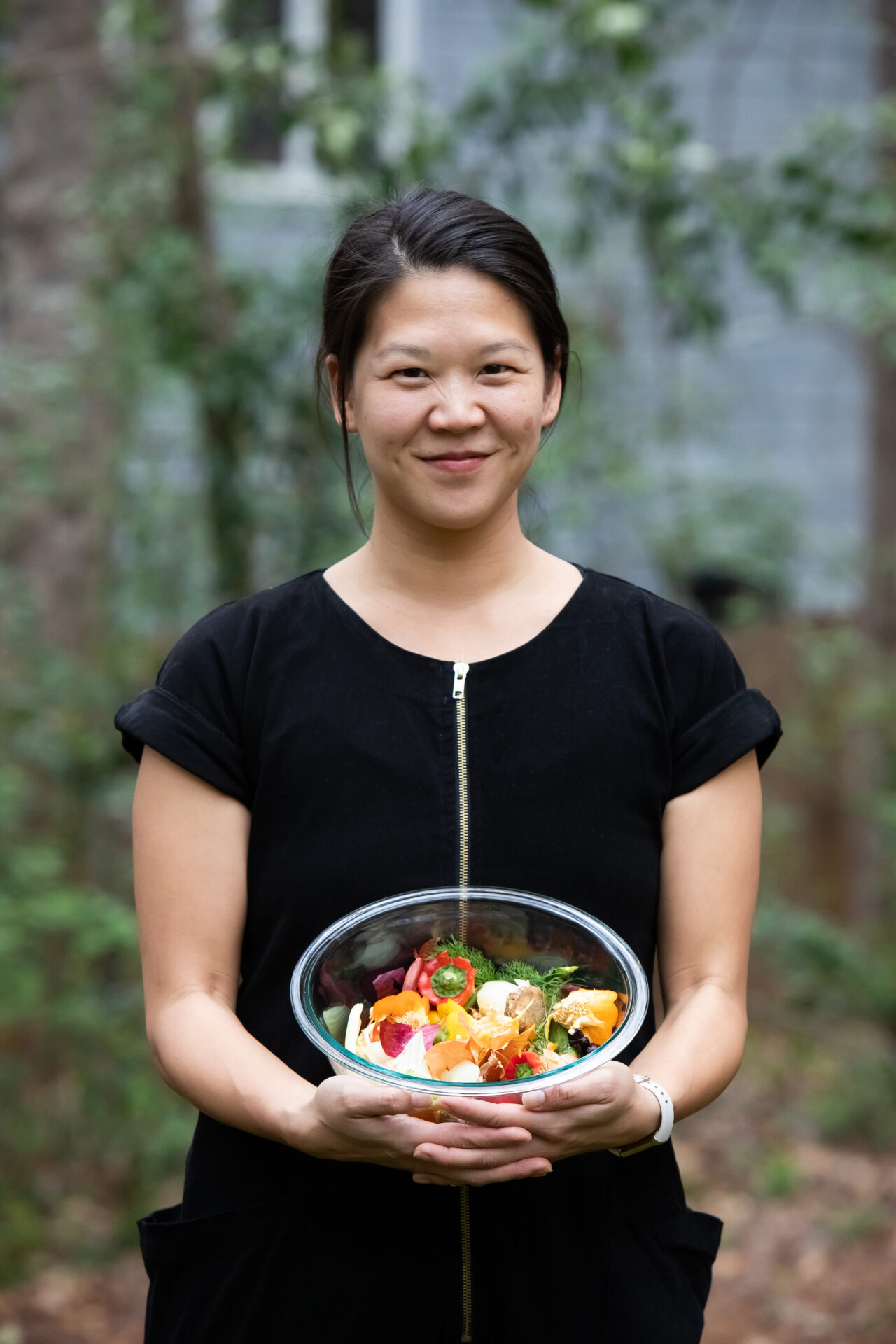
While the statistics are daunting and there’s plenty of work to be done on the producer and retailer level to improve food waste, you don’t have to become a composting expert or organic-only vegan to make a difference in your ownhome. Sisters Mei and Irene Li have built a career on the simple notion that there are easy—and delicious—ways to improve your own household food waste habits.
Mei, Irene, and their brother, Andrew, started a food truck in 2012 to serve the food they grew up with, combining Chinese-American influences with local ingredients in their native Boston. The truck evolved into a restaurant, then a dumpling company. While the food truck and restaurant dining rooms huttered during the pandemic, Irene is now at the helm of Mei Mei Dumplings, which distributes seasonally inspired dumplings all over Massachusetts and Rhode Island.
The youngest of the three siblings, Irene put her degree in food systems and cultural studies from Cornell University to good use, developing an ethical sourcing program that works with family farms throughout New England for their meat and produce—work that helped earn her a James Beard Leadership Award in 2022. Mei has since relocated to Raleigh, North Carolina, and stepping back from running a restaurant full-time gave her the chance to write a cookbook: Double Awesome Chinese Food (RoostBooks, 2019).
“In writing a cookbook, you write these specific recipes like ‘one tablespoon of parsley’ and people cook specifically for that, so there can be a lot of waste involved,” she says. “Then you have all of these ‘one bunch minusa tablespoon of parsley,’ and if you’re not used to using up herbs, that can be intimidating.
The sisters were already eco-minded at their restaurant. Mei Mei Dumplings is certified as a sustainable business with an emphasis on cutting down food waste, but they took the mission a step further, creating a blog that encourages home cooks to view what’s left in their fridge in a different light. Launched in 2018, Food Waste Feast is part educational resource, part recipe blog, that goes beyond using scraps for stock or whirling wilting herbs into pesto—it’s everything from tips on keeping produce fresh to a recipe for a banh mi-inspired sandwich made from charcuterie board leftovers.
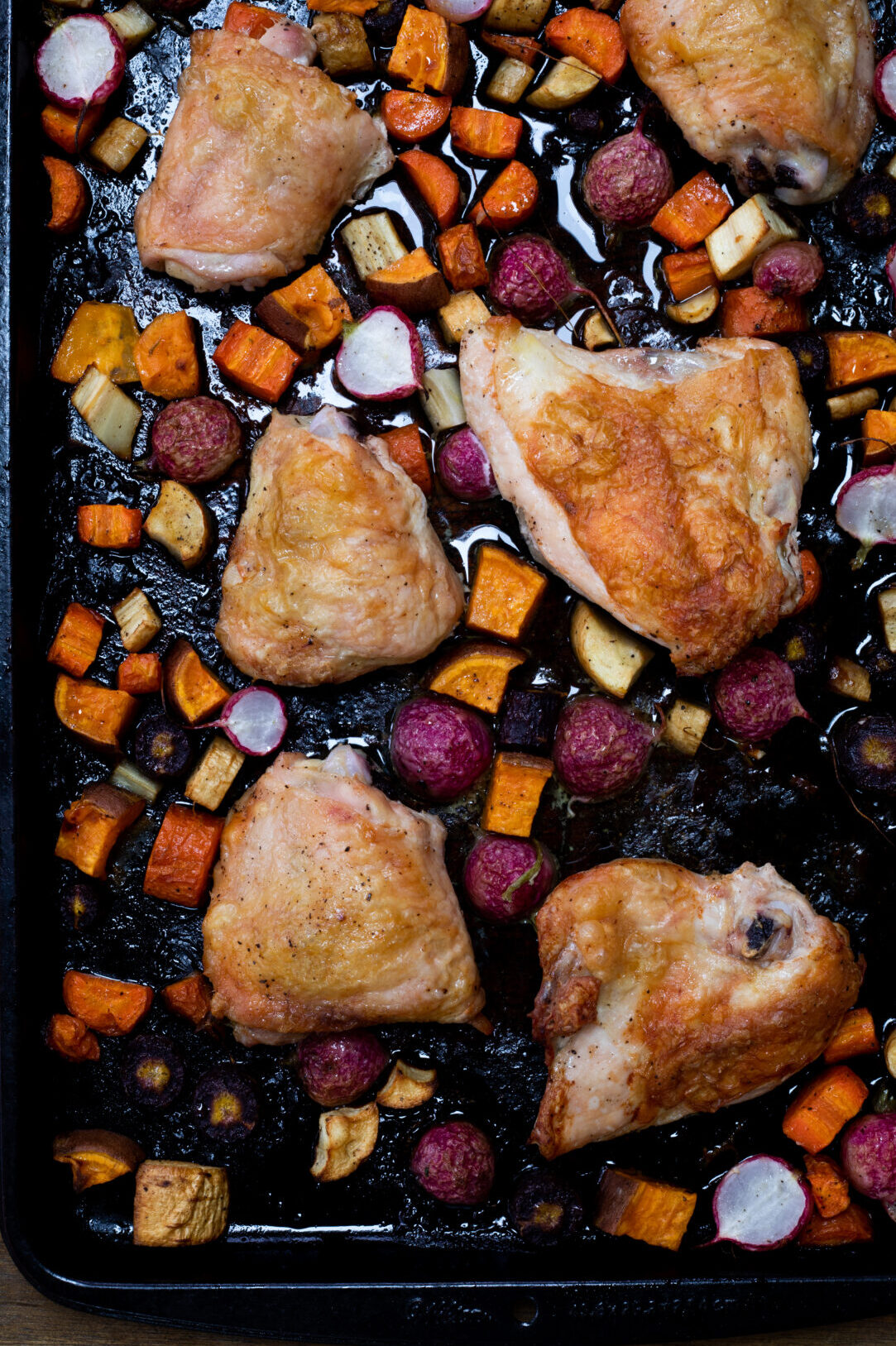
For Mei, reducing food waste at home starts with an organized fridge. “Shop your kitchen before you go grocery shopping,” she suggests. “I have something called an ‘eat me first’ box that I keep in the front of my fridge at eye level, and that’s where all the lemon halves, open garlic, half an apple, all the pieces go so I know to use those up.” The freezer, Mei notes, is also a great food waste-fighting tool: “It’s like a time machine.”
Certain ingredients do the heavy lifting on Food Waste Feast, starting with greens and grains as building blocks for a dizzying array of options. Herbs, arugula, spinach, and more find a home in Mei’s green sauce recipe, which accents everything from sandwiches to grilled veggies—like her grilled allium platter. Leftover rice or noodles form the base for many hearty use-it-up dishes to help clean out your produce drawers. And don’t be afraid of slightly wilted or yellowed lettuce for a stir-fry or pasta dish when it’s no longer in its salad prime.
More than any ingredient or technique, though, reducing food waste at home is about a change in mentality, says Mei. “I think for me as someone who is a fundamentally lazy person but also someone who believes in being creative with your cooking, I like to look at recipes and get inspired but always will be very willing to adapt and change,” she says. “I have friends who are amazing cooks following recipes, but they’re much less willing to adapt or substitute, and that makes it really hard to use the food you have.
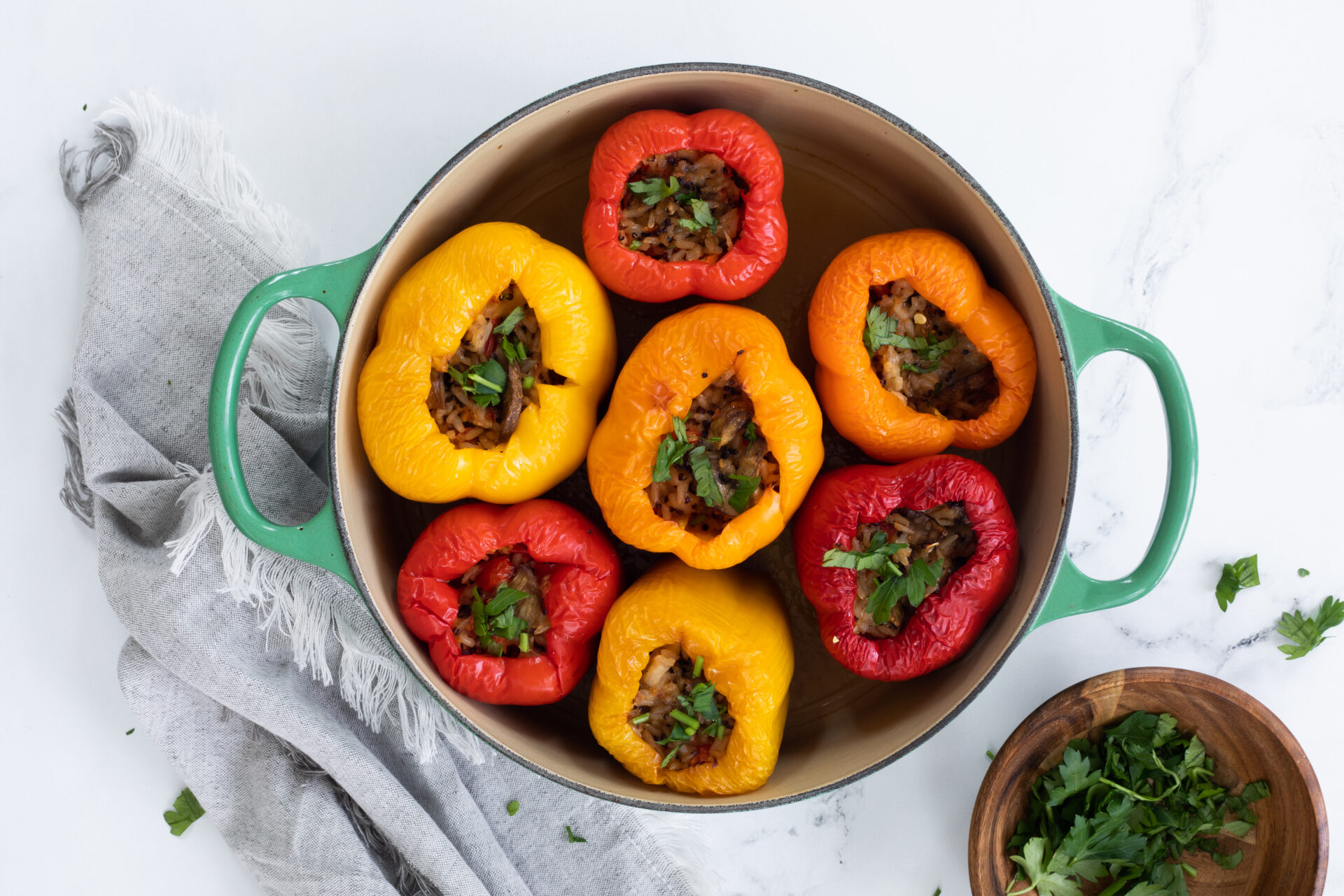
To combat that mentality, Mei writes recipes that are general enough to serve as a guide without limiting the cook to one ingredient or flavor profile, so you can put what’s in your fridge to work for you. Her stuffed peppers, for instance, can use any grain or other leftovers for the filling and work with any summer vegetable—making for endless combinations to use up what you have on hand and keep the recipe interesting time after time. “It goes back to that idea of having things be interchangeable and, thus, more likely for you to find ways to use them up,” she says.
Along the same lines, being open to preparing things in a nontraditional way can also ensure using up ingredients, like adding shredded vegetables to a risotto. “If you’re okay with having slightly unusual textures in a risotto, if you don’t feel like you have to have this pristine Italian grandmother ‘I stood at the stove and stirred for an hour’ type of dish, then you can use up tons of stuff and it’s very, very satisfying,” Mei says. Hearty dishes like risottos and stews area food waste warrior’s best friend.
In all, it’s about adjusting your expectations and embracing your inner creativity in the kitchen, she says. “The whole idea of ‘the best ingredients you can find’—sure that’s nice, but that’s not always realistic if you don’t want everything you actually have going in the trash.
Mei Li’s Food Waste Recipes
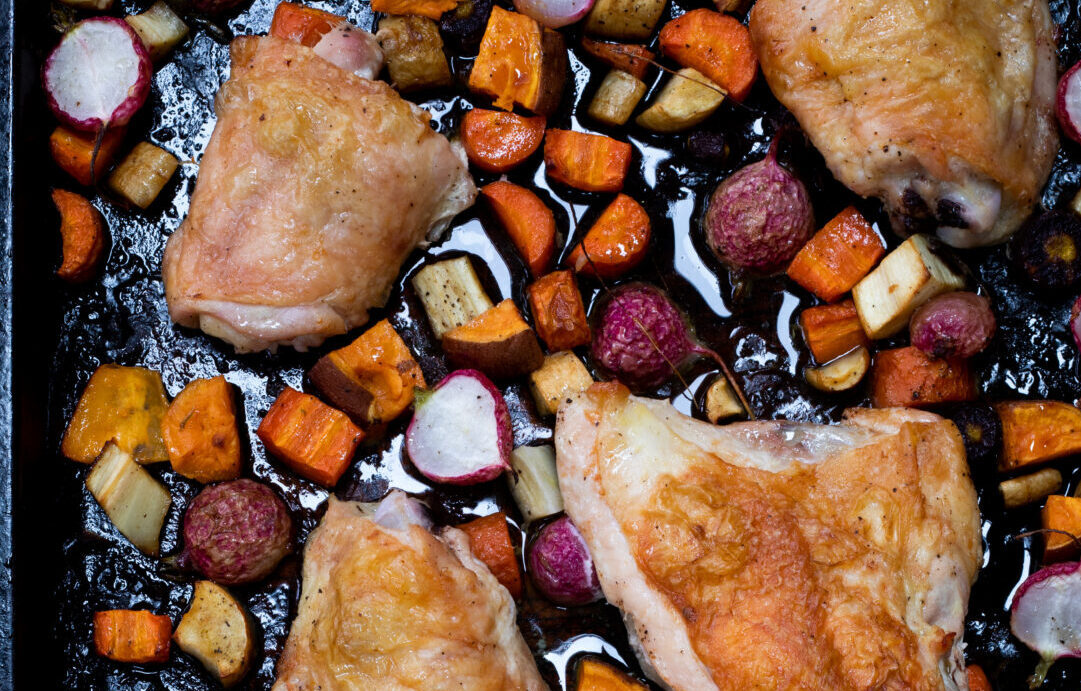
Sheet Pan Chicken and Root Vegetables
This easy dinner is a delicious one-pan meal that utilizes interchangeable ingredients and whatever else you have in your fridge.
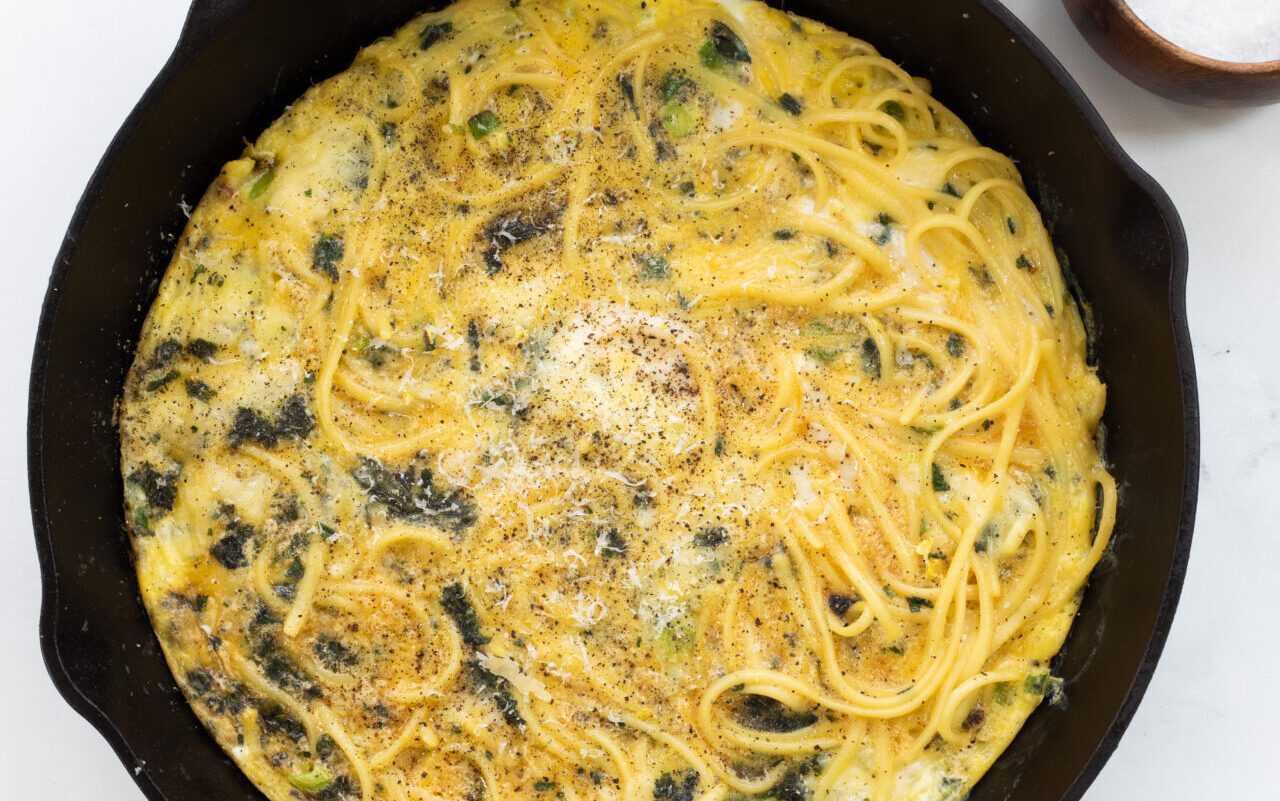
Leftover Pasta Frittata
A warm pasta dish that is guaranteed to make you forget that you’re using last night’s noodles. This skillet-full of carby goods can have anything added to it, from wilting greens to odd bits of cheese, to enhance the flavor.
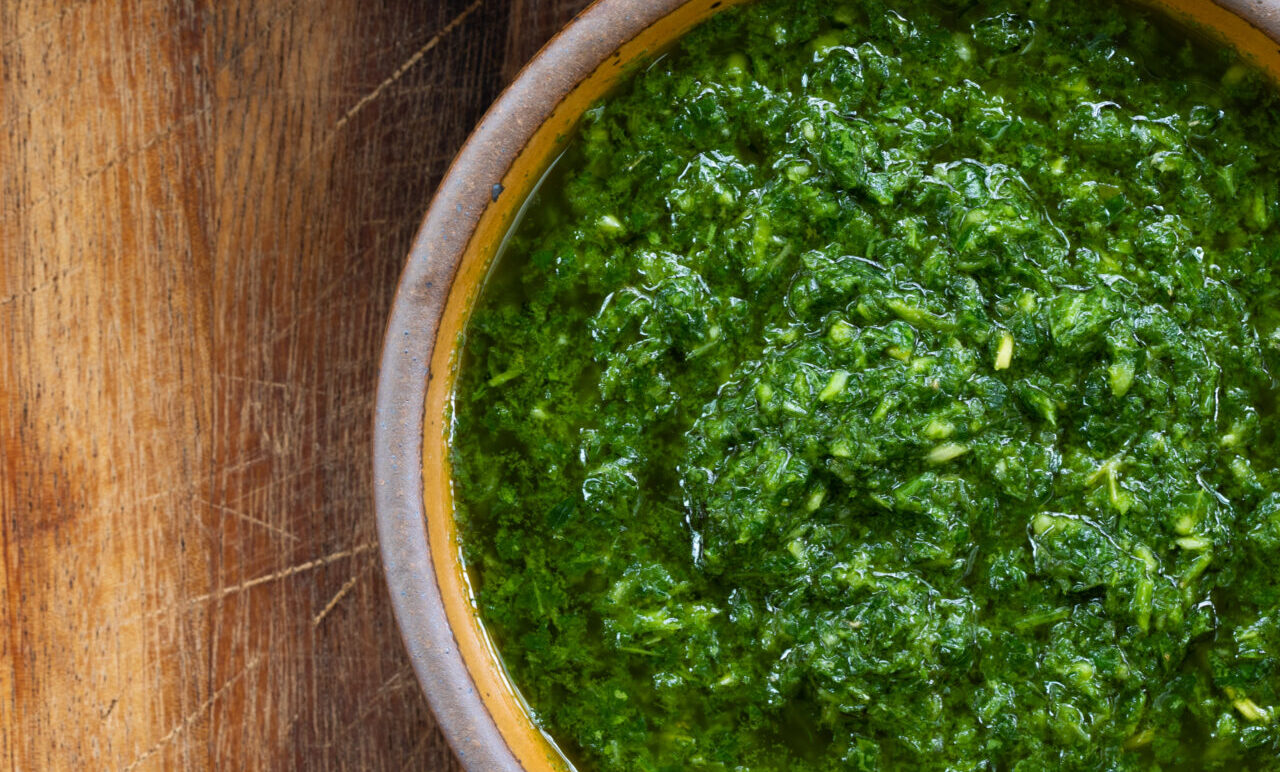
Green Herb Sauce
Grab the leafy greens that are going unused in the back of the refrigerator and try out Mei Li’s recipe for a sauce that truly goes well on just about anything.
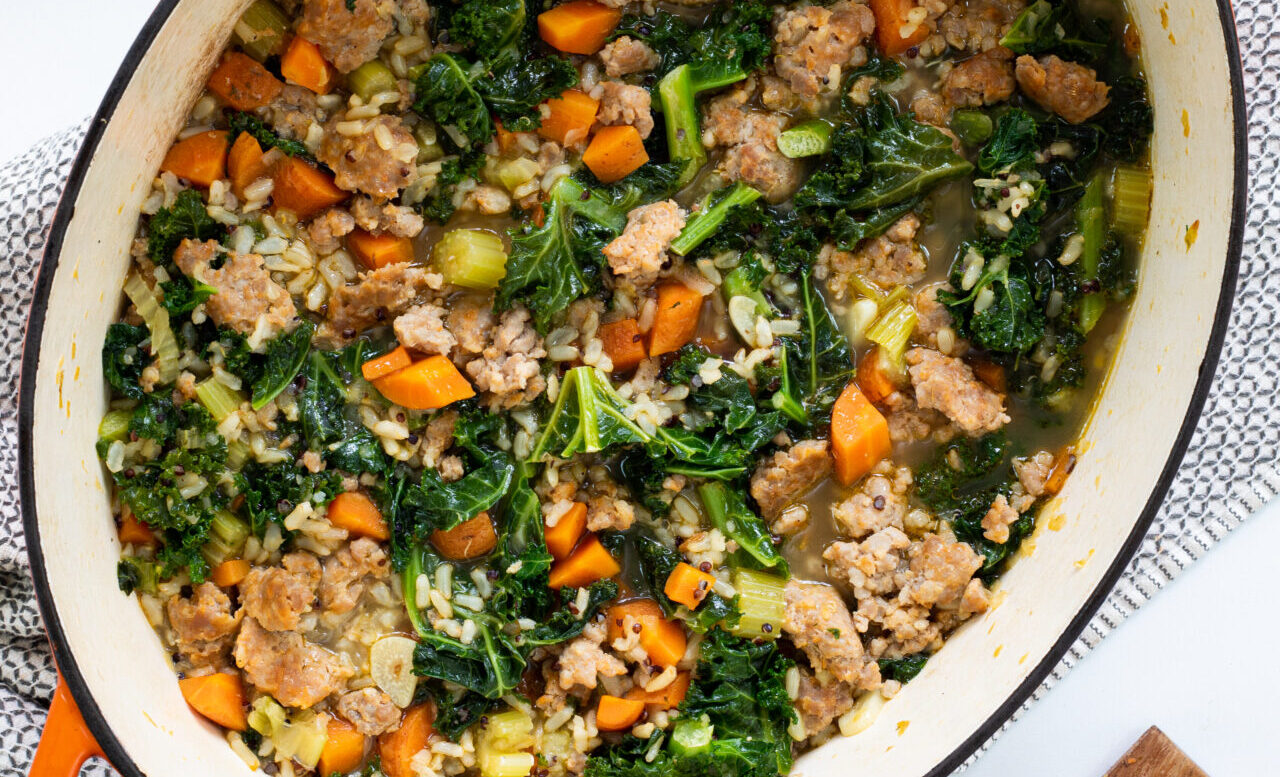
Leftover Grain Stew with Sausage and Hearty Greens
This warm stew gives a grain-packed meal and a perfect fall or winter bowl that’ll give life to so many ingredients left untouched in your kitchen.
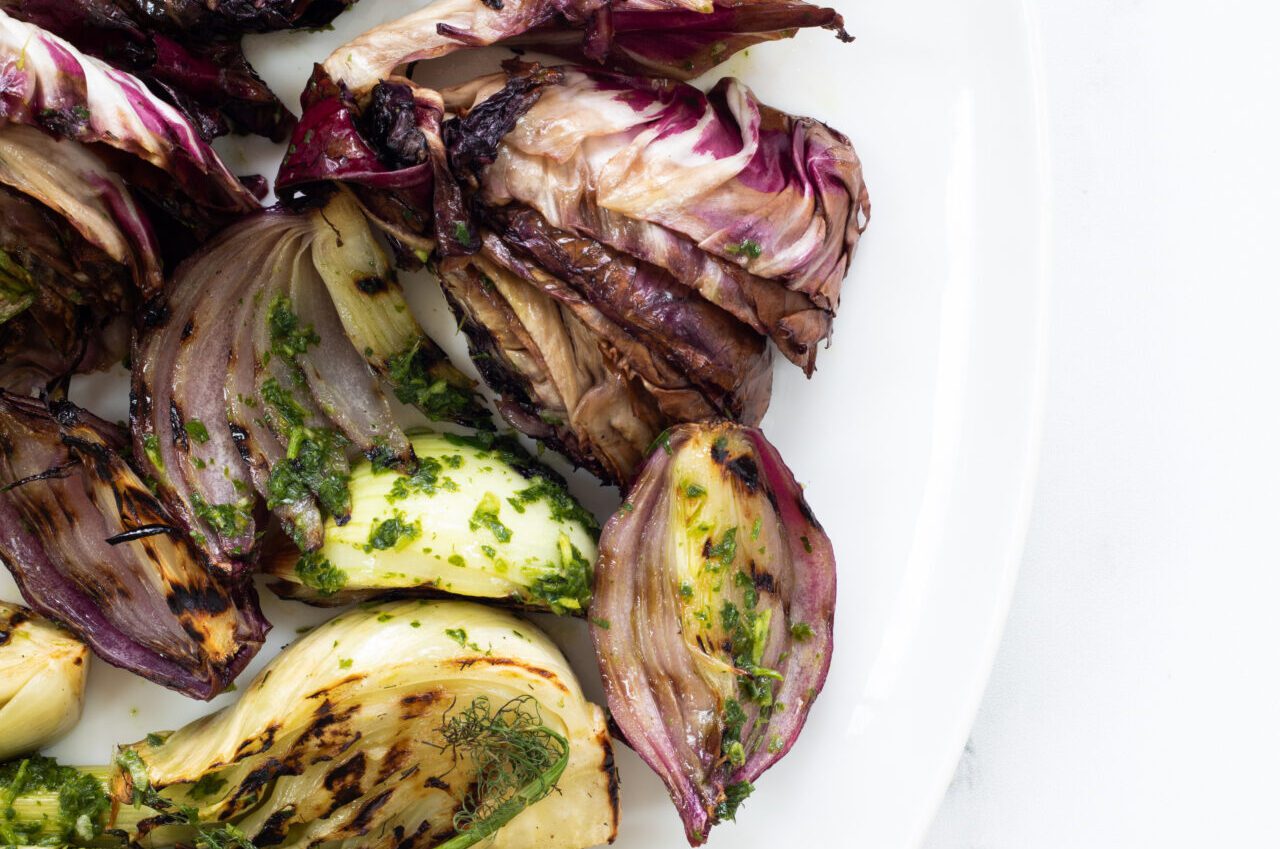
Grilled Alliums
Grilling alliums until they caramelize and turn sweet helps tempers their spicy bite, plus, it helps use up a surplus of the inexpensive bulbs.
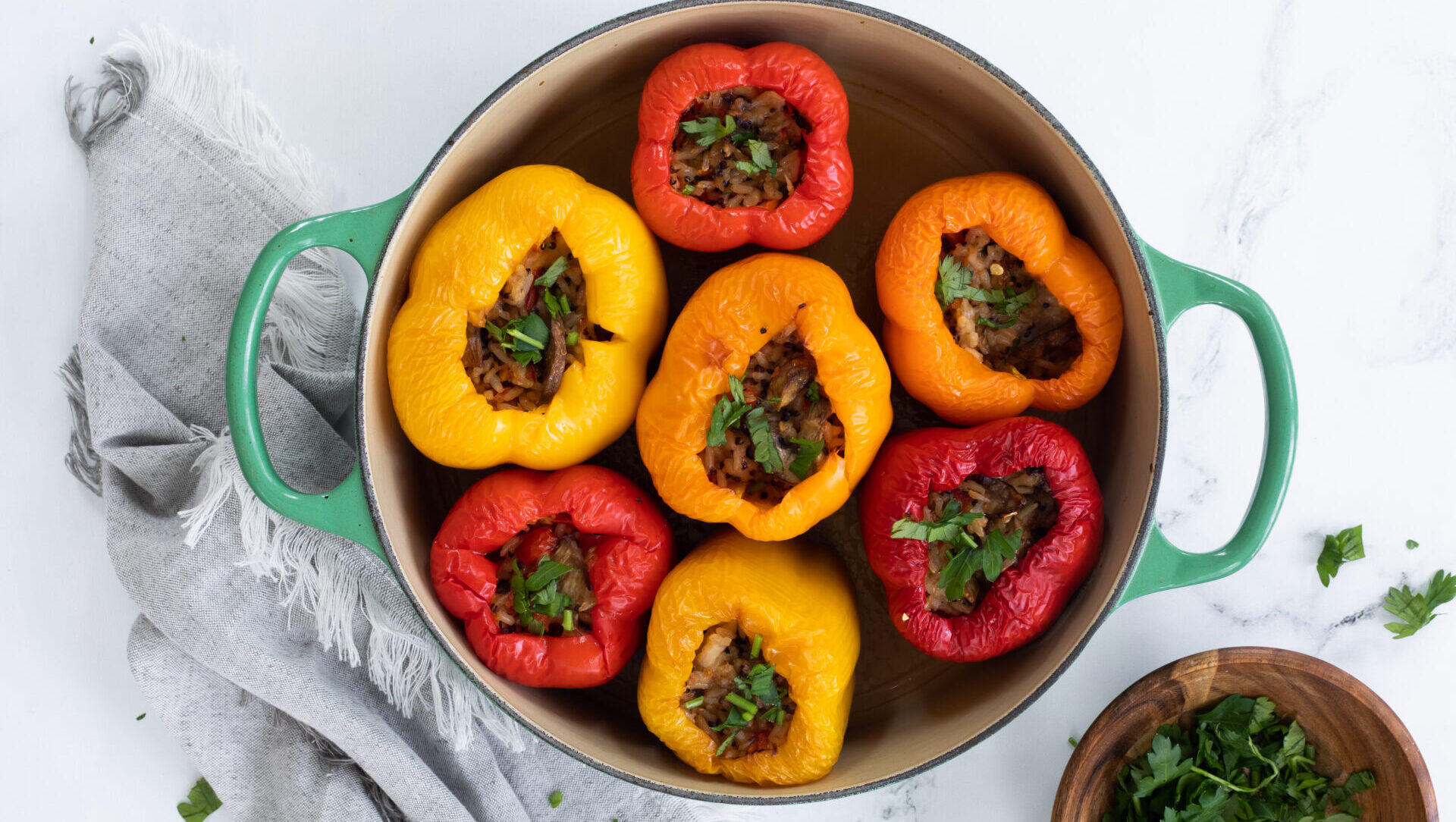
Fridge Clean-out Stuffed Peppers
Riff your way around these stuffed peppers and reimagine the ways to use what you’ve got.
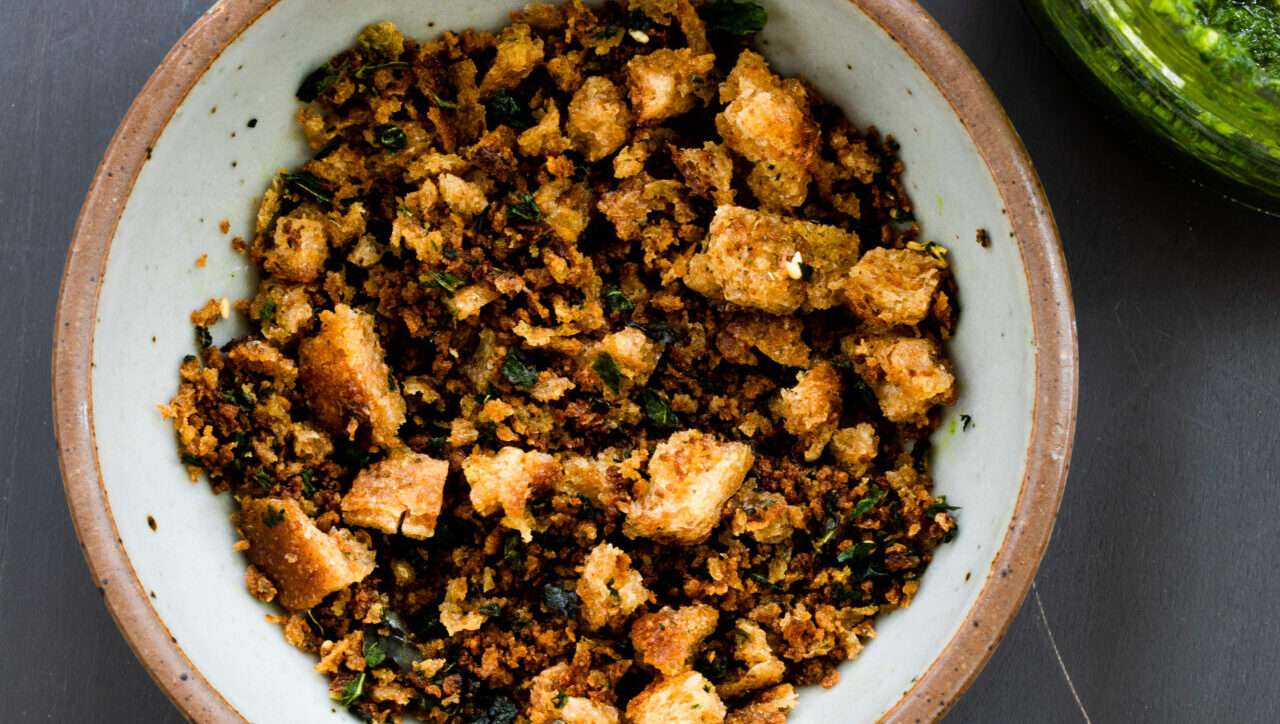
Toasted Breadcrumbs
The idea is that your stale bread becomes this delicious thing that makes basically every other recipe tastier. Add these breadcrumbs to casseroles, salads, sheet pans, or any other dish you could care for.
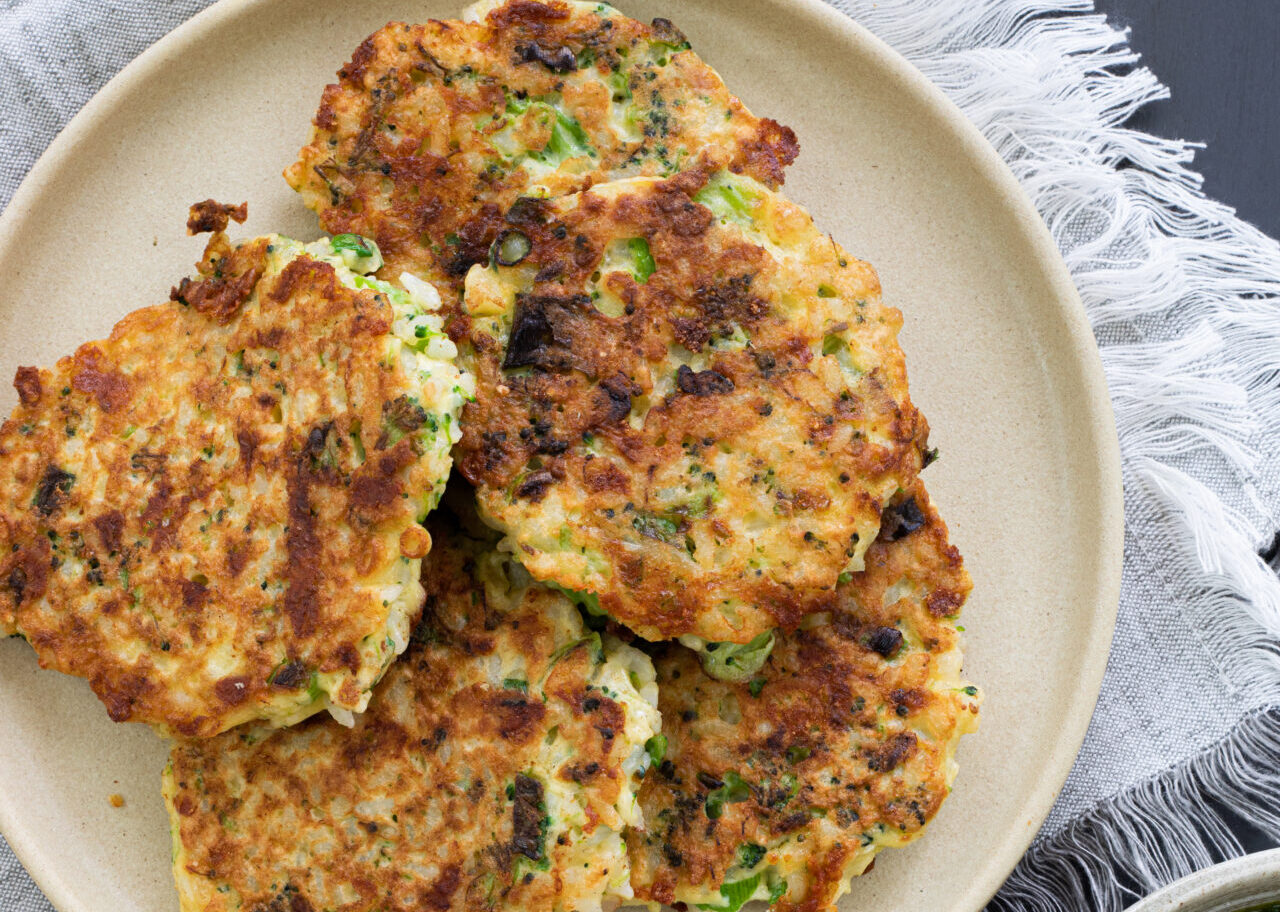
Leftover Rice Fritters
This recipe can use up extra rice, random cheeses, and cooked vegetables in your house. And you’re much more likely to entice kids if you put leftovers into a golden-brown fried patty.
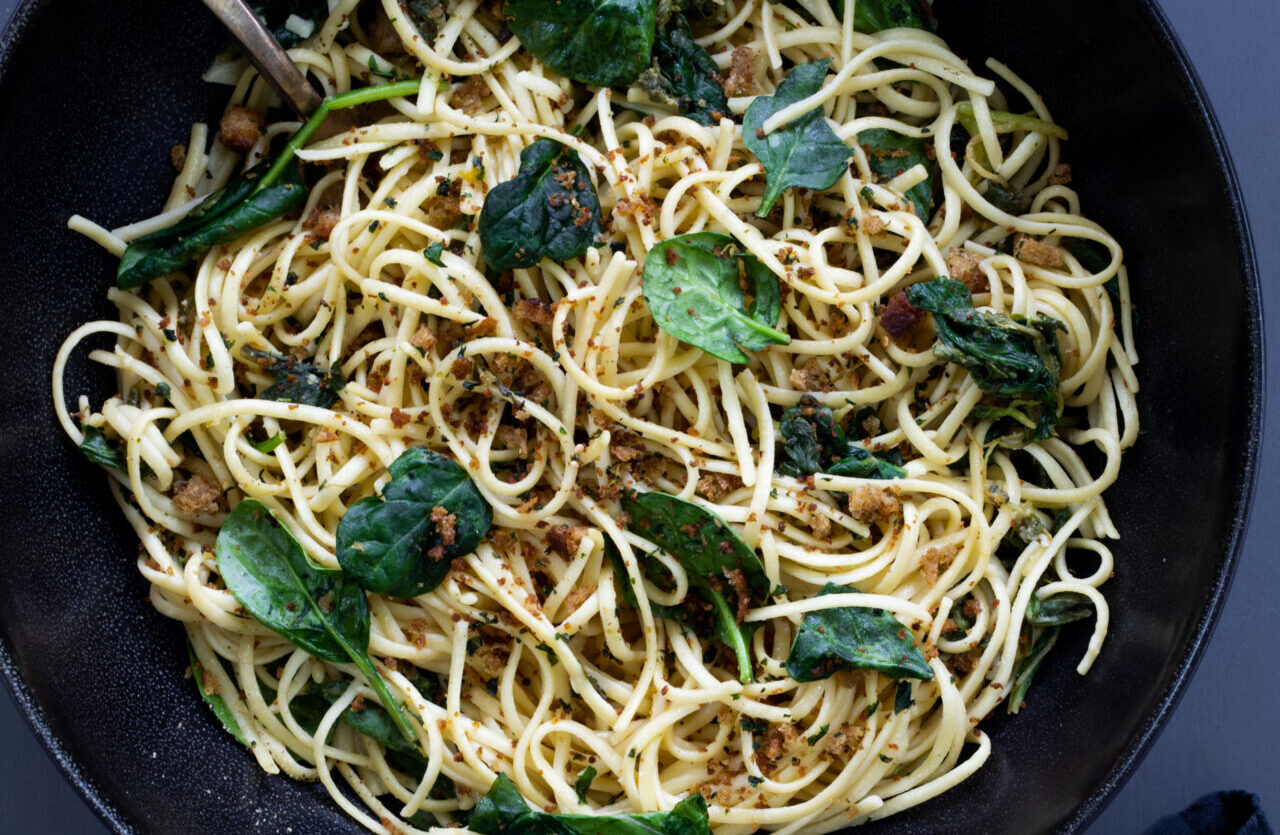
Lemon Pasta with lots of Leafy Greens
A creamy and silky plate of pasta with color that is an tweak for any texture you’re craving.

Garlicky Stir-Fried Lettuce
Who knew you could stir fry lettuce? Not us! See how Mei Li introduces a recipe that will give new life to the greens hiding in the corner of the fridge.
